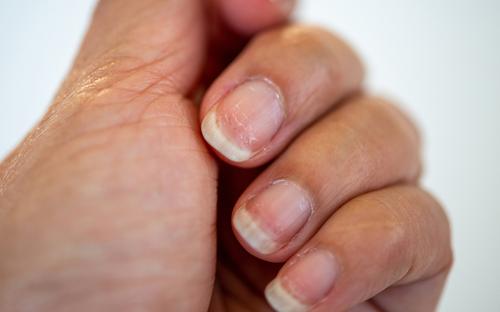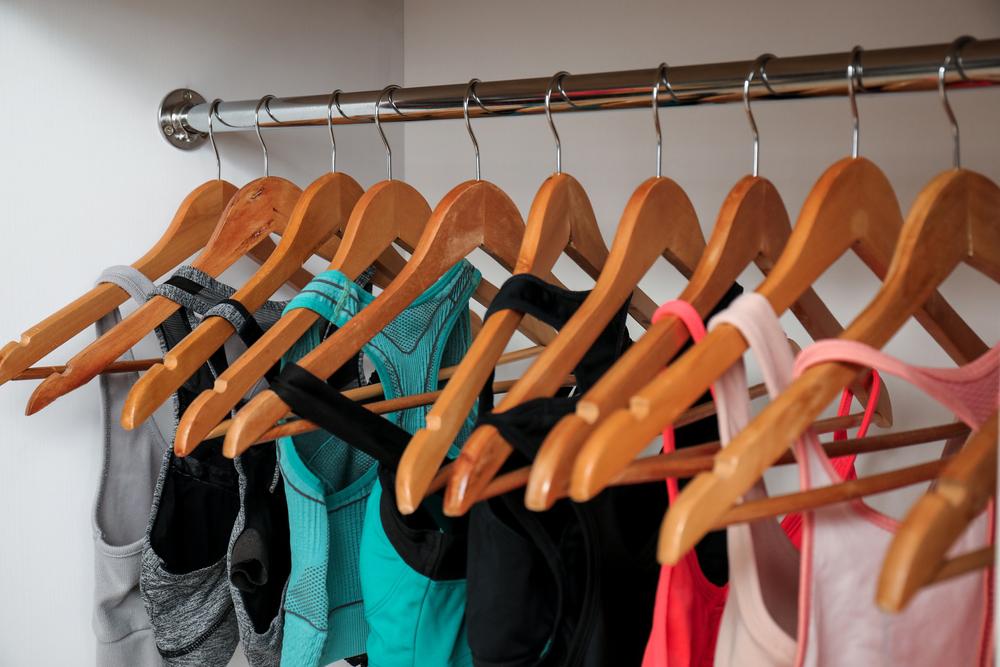 Content Warning: This article contains mentions of eating disorders.
Content Warning: This article contains mentions of eating disorders.
Young athletes are highly susceptible to negative thoughts around body image—and those thoughts can balloon into serious problems for your athlete’s health if not addressed early. As a parent, what should be considered a cause for concern or just a typical young person’s angst?
Here, TrueSport Expert and licensed clinical psychologist Dr. Melissa Streno shares some of the most common ‘red’ and ‘yellow’ flag behaviors when it comes to young athletes and body image. Keep in mind that yellow flag behaviors should be taken as seriously as red flag ones. The primary difference is the intervention required—for red flag behaviors, a doctor should be informed, and a treatment plan may be deemed necessary, since red flags typically indicate a more chronic, potentially deadly problem. For a ‘yellow flag’ behavior, it may be possible to simply work with the athlete’s coaches and a counselor to improve their body image before it becomes a dangerous issue.
Mental signs
Yellow Flag: Increased Negative Commentary Around Body Image, Food, and Exercise
“Pay attention to the specifics of the language your athlete uses when talking about body image, food, and exercise,” Streno says. “For example, what is the athlete saying about exercise? You may start to notice an athlete begin to equate the amount of exercise they do to what they’re ‘allowed’ to eat afterwards.”
It may seem innocuous at first: An athlete saying that they are having a ‘fat day,’ or that they’re skipping a meal because they didn’t ‘workout hard enough.’ Streno points out that if an athlete is saying these things out loud, the negative chatter around body image in their head is likely to be even louder.
Red Flag: Disordered eating behaviors
 The more concerning version of this yellow flag is when it becomes a pattern of observable behavior, says Streno. If an athlete is regularly referring to skipping meals after a bad practice or ‘earning’ a treat after practice, that becomes problematic. You may also start to notice the behaviors around disordered eating becoming more obvious, such as skipping meals with teammates or starting to subscribe to a very strict diet. Any clear change in eating patterns is grounds for concern.
The more concerning version of this yellow flag is when it becomes a pattern of observable behavior, says Streno. If an athlete is regularly referring to skipping meals after a bad practice or ‘earning’ a treat after practice, that becomes problematic. You may also start to notice the behaviors around disordered eating becoming more obvious, such as skipping meals with teammates or starting to subscribe to a very strict diet. Any clear change in eating patterns is grounds for concern.
Even if the behaviors don’t seem to be overly restrictive and you’re not concerned that an athlete is severely underfueling, it’s better to address these behaviors early rather than waiting until they hit dangerous levels of restriction.
Physical signs
Yellow Flag: Change in Appearance and Attitude
The way an athlete presents themself can be a yellow flag. If there’s a sudden change in the way that they’re dressing, for example, that can signal a change in their body image. You may notice that an athlete is suddenly wearing baggier clothing in an effort to hide or cover their body. The athlete may also start to avoid looking in mirrors or being in photos. This can be a sign that an athlete is struggling with body image, and can also be a sign of body dysmorphia, says Streno. “A lot of times, an athlete will realize, in hindsight, that they were purposely covering up because they felt that they needed to be that covered,” she says. “Even if they lose weight, they cannot see it. They look in the mirror and have a distorted view of what they look like.”
Athletes may also begin to pull back and isolate themselves from the team, says Streno. Skipping team meals or fun team activities may simply be a sign that an athlete is busy with schoolwork, but it can be a cause for concern if paired with a change in appearance or increase in negative self-talk around body image.
Red Flags: Physical changes, signs of purging, emotional changes
 Body image issues can unfortunately lead to more severe eating disorders. Pay attention to the subtle signs as well as the obvious symptoms like rapid weight loss. “You may notice an athlete is increasingly pale, or that their hair and nails are more brittle,” says Streno. “Obviously, rapid weight loss is a commonly cited symptom, but we know now that many athletes won’t display weight loss even while struggling with an eating disorder.”
Body image issues can unfortunately lead to more severe eating disorders. Pay attention to the subtle signs as well as the obvious symptoms like rapid weight loss. “You may notice an athlete is increasingly pale, or that their hair and nails are more brittle,” says Streno. “Obviously, rapid weight loss is a commonly cited symptom, but we know now that many athletes won’t display weight loss even while struggling with an eating disorder.”
Purging-based disorders will not always lead to rapid weight loss, says Streno, but there are other signs, such as elevated liver enzymes or abnormal potassium and sodium levels, that may be indicative of an athlete binging and purging. Signs of dehydration may also indicate purging behaviors, as can erosion of tooth enamel.
From an emotional perspective, you may notice that the athlete has continued to pull away from teammates and isolate themselves. You may also start to notice signs of depression or heightened anxiety.
Reminders
Don’t base concern on weight alone
While weight is one red flag when it comes to diagnosing an eating disorder, it’s not the only one, nor is it the most common. In fact, by the time an athlete is at an unhealthy low weight, or their weight loss is noticeable, they’ve already been suffering from an eating disorder for a while.
“We tend to associate eating disorders with smaller bodies, but there’s a staggering statistic that more than 90 percent of those with eating disorders are actually at a clinically ’normal’ weight, or would even be considered clinically overweight,” says Streno. And since adolescent athletes may be hitting growth spurts regularly, weight becomes an even less reliable metric or warning sign for eating disorders.
Err on the side of caution
 Finally, remember that the signs we’ve listed here are imperfect warnings of issues with body image and potentially for disordered eating and excessive exercise patterns. If you sense that something is ‘off’ with your athlete, seek help sooner rather than later. Pay attention to shifts in your athlete’s behavior: As TrueSport Experts have said over and over, as the parent of an athlete or a longtime coach, you know that your athlete cannot be reduced to a list of signs and symptoms.
Finally, remember that the signs we’ve listed here are imperfect warnings of issues with body image and potentially for disordered eating and excessive exercise patterns. If you sense that something is ‘off’ with your athlete, seek help sooner rather than later. Pay attention to shifts in your athlete’s behavior: As TrueSport Experts have said over and over, as the parent of an athlete or a longtime coach, you know that your athlete cannot be reduced to a list of signs and symptoms.
______________________
Takeaway
Whether you’re noticing cautionary signs like a shift in an athlete’s self-talk around body image or spotting some more concerning behavior like purposely skipping meals, pay attention to both red and yellow flags when it comes to an athlete’s body image. Noticing a ’yellow flag’ behavior and addressing it before it can become a serious problem may save a young athlete’s health, or even their life.



